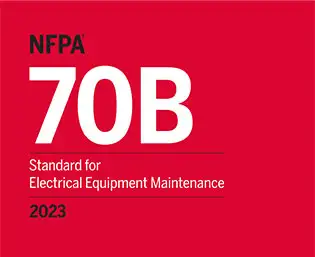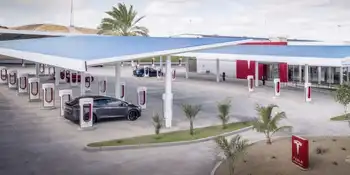How vehicle-to-building charging can save costs, reduce GHGs and help balance the grid: study

NFPA 70b Training - Electrical Maintenance
Our customized live online or in‑person group training can be delivered to your staff at your location.

- Live Online
- 12 hours Instructor-led
- Group Training Available
Ontario EV Battery Storage ROI leverages V2B, V2G, two-way charging, demand response, and second-life batteries to monetize peak pricing, cut GHG emissions, and unlock up to $38,000 in lifetime value for commuters and buildings.
Key Points
The economic return from V2B/V2G two-way charging and second-life storage using EV batteries within Ontario's grid.
✅ Monetize peak pricing via workplace V2B discharging
✅ Earn up to $8,400 per EV over vehicle life
✅ Reduce gas generation and GHGs with demand response
The payback that usually comes to mind when people buy an electric vehicle is to drive an emissions-free, low-maintenance, better-performing mode of transportation.
On top of that, you can now add $38,000.
That, according to a new report from Ontario electric vehicle education and advocacy nonprofit, Plug‘n Drive, is the potential lifetime return for an electric car driven as a commuter vehicle while also being used as an electricity storage option amid an energy storage crunch in Ontario’s electricity system.
“EVs contain large batteries that store electric energy,” says the report. “Besides driving the car, [those] batteries have two other potentially useful applications: mobile storage via vehicle-to-grid while they are installed in the vehicle, and second-life storage after the vehicle batteries are retired.”
Pricing and demand differentials
The study, prepared by the research firm Strategic Policy Economics, modeled a two-stage scenario calculating the total benefits from both mobile and second-life storage when taking advantage of differences in daytime and nighttime electricity pricing and demand.
If done systematically and at scale, the combined benefits to EV owners, building operators and the electricity system in Ontario could reach $129 million per year by 2035, according to the report. Along with the financial gains, the province would also cut GHG emissions by up to 67.2 kilotons annually.
The math might sound complicated, but the concepts are simple. All it requires is for drivers to charge their batteries with low-cost electricity overnight at home, then plug them into two-way EV charging stations at work and discharge their stored electricity for use by the building by day when buying power from the grid is more expensive.
“Workplace buildings could avoid high daytime prices by purchasing electricity from EVs parked onsite and enjoy savings as a result,” says the report.
Based on average commuting distances, EVs in this scenario could make half their storage capacity available for discharge. Drivers would be paid out of the building’s savings, effectively selling electricity back to the grid and earning up to $8,400 over the life of their vehicle.
According to the report, Ontario could have as many as 18,555 vehicles participating in mobile storage by 2030. At this level, the daily electricity demand would be reduced by 565 MWh. This, in turn, would reduce demand for natural gas-fired electricity generation, a fossil-fuel electricity source, avoiding the expense of gas purchases while reducing GHG emissions.
The second-life storage opportunity begins when the vehicle lifespan ends. “EV batteries will still have over 80% of their storage capacity after being driven for 13 years and providing mobile storage,” the report states. “Those-second life batteries could provide a low-cost energy storage solution for the electricity grid and enhance grid stability over time.”
Some of the savings could be shared with EV owners in the form of a rebate worth up to 20 per cent of the batteries’ initial cost.
Call to action
The report concludes with a call to action for EV advocates to press policy makers and other stakeholders to take actions on building codes, the federal Clean Fuel Standard and other business models in order to maximize the benefits of using EV batteries for the electricity system in this way, even as growing adoption could challenge power grids in some regions.
“EVs are often approached as an environmental solution to climate change,” says Cara Clairman, Plug’n Drive president and CEO. “While this is true, there are significant economic opportunities that are often overlooked.”











